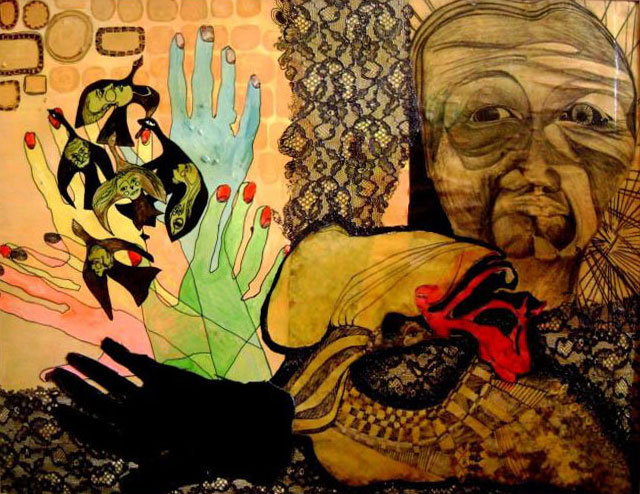Dear Artist,
Art is a confabulation. Perhaps only with the addition of confabulation can art deliver its wizardry and magic. Scientifically defined, confabulation is the confusion of imagination with memory, and/or the confusion of true memories with false memories. In the art of art, falsehood gets to a deeper truth.
Early researchers, such as psychologist Daniel Berlyne (1972), linked confabulation with amnesia and abnormal brain chemistry. Nowadays, it’s more pleasantly harnessed to the marvellous potential of the human imagination. Fantastic and spontaneous outpourings of irrelevant associations and bizarre ideas come quite naturally to ordinary creative folks. There’s a sack full of it in the world of art. One need only look at pictures. Take Paul Klee’s “A Young Lady’s Adventure” (1922), where convoluted lines, intertwining design and off-beat symbolism weave a sensual spell. Or Gustav Klimt’s Mme Fritsa Riedler (1906), where decorative elegance and over-the-top opulence, combined with a stunningly realistic face, spin the mind to suspend belief in the normal. Just look at the cascading negative-positive dress line that diagonals the painting. Is this not magic?
Art without confabulation is the plain goods. Confabulatory enhancement can come from an idiosyncratic style or stroke or from some happenstance slice from an individualist’s hand. It can also come from the brain. Ancillary ideas, metaphors and the embellishments of truth add interest and depth to otherwise standard work. Consciously or unconsciously, we ask the viewer to avoid saying, “So what.” In a world where it’s easy to be complacent or uncaring, confabulation raises curiosity and is a key to a broader, more enriched view. It’s what we do with what we have that makes art. Confabulation adds energy, joy, fantasy and mystique to the human experience. “The world,” said Henry David Thoreau, “is but a canvas to the imagination.”
Best regards,
Robert
PS: “Imagination is more important than knowledge. Knowledge is limited. Imagination encircles the world.” (Albert Einstein)
“I’ve looked at life from both sides now, From win and lose and still somehow It’s life’s illusions I recall I really don’t know life at all.” (Joni Mitchell)
Esoterica: Surrender to your imagination. It’s the wellspring of great art. Exercise: Go to an unfamiliar area and find some sort of a structure — a decrepit or even a new home, a country store, an old factory. Stare at it for some period of time — you can generally get away with this in the sanctuary of a car. Populate the place with imagined people. Quietly, privately, tell their story. Note how windows become eyes, horns appear on the roof, doors begin to smile or frown, and young children run from the structure in joy or fright.
This letter was originally published as “Marvelous Confabulation” on December 25, 2007. Also included is an excerpt from “Illusionary structures” published in 2003.
[fbcomments url=”http://clicks.robertgenn.com/confabulation.php”]
Featured Workshop: Jeanne Rosier Smith

The American Mythology mixed media, 58.5 x 44.5 cm |
You may be interested to know that artists from every state in the USA, every province in Canada, and at least 115 countries worldwide have visited these pages since January 1, 2013.








